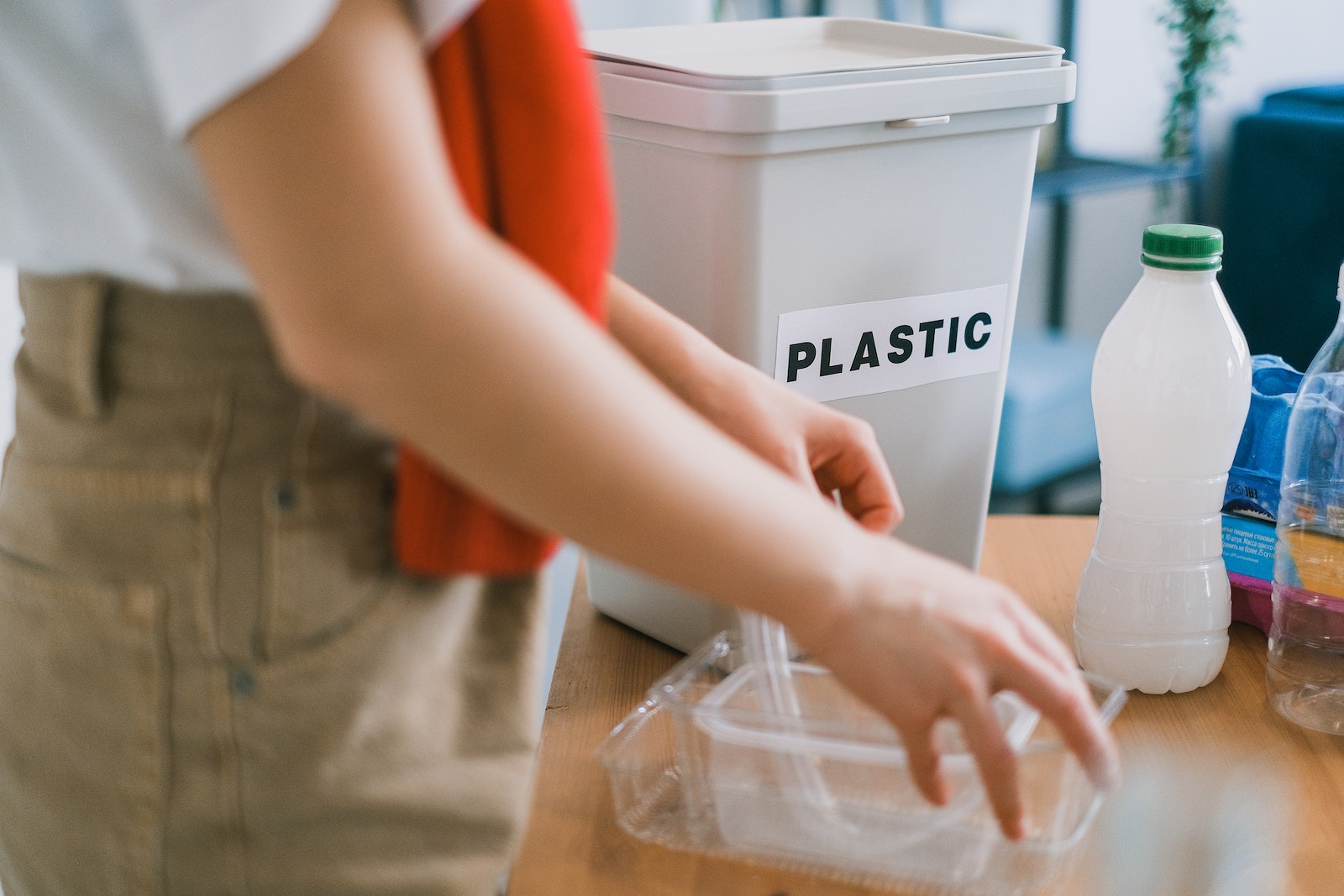When it comes to our kitchen, the importance of recycling and waste management often doesn’t get the attention that it deserves, yet, with a few easy shifts in habits and processes, you can become an agent for change right in your own home.
In today’s blog post, we’ll be discussing some key points to help you start managing waste better in your own kitchen, from understanding what materials are recyclable to learning how best to store food scraps until they can be composted. Let’s start with some basics
Types of Recyclable Materials Found in the Kitchen
The three Rs (reduce, reuse, and recycle) are known around the world as the way to handle unwanted materials but knowing what to do with each type of waste isn’t always easy, or familiar.
With all the different types of recyclable materials out there, it can be daunting for someone just starting out on their recycling journey. So let’s take a look at all the different types of recyclables, and how you can make sure they get recycled properly!
Here are some common types of kitchen waste that can be recycled:
- Food scraps – fruit and vegetable peels, eggshells, coffee grounds, tea bags, bread crusts, etc.
- Paper products – cardboard boxes, paper bags, newspaper, paper towels, etc.
- Glass containers – glass jars and bottles from sauces, drinks, or other food items
- Plastic packaging – plastic containers from food items such as yogurt cups or milk jugs
- Metal cans – aluminum or steel cans from canned goods
To identify which types of waste can be recycled in your specific area, you can check with your local recycling program or waste management facility for specific guidelines on what they accept for recycling.
Adopting New Habits for Separating and Sorting Kitchen Waste & Recyclables
Here are some tips for adopting proper separation and sorting procedures in the home kitchen:
- Set up separate bins or bags for different types of waste: recyclables, compostables, and landfill-bound items.
- Keep a small container on your countertop to collect food scraps as you prep your meals. This makes it easier to compost them later.
- Use reusable containers and bags instead of disposable ones. This can reduce the amount of waste generated in the first place.
- Wash and dry recyclable items before putting them in the recycling bin. This helps ensure that they will actually be recycled.
- Make sure you know what is accepted for recycling in your area. Different municipalities have different rules about what can be recycled.
- Label your bins or bags so everyone in your household knows which items go where.
- Consider setting up a small compost bin if you have a garden or outdoor space where you can use the resulting fertilizer.
- Make sure hazardous materials (like batteries, electronics, or cleaning products) are properly disposed of according to local regulations.
- Take advantage of any opportunities for community recycling programs, like hazardous waste collection days or electronic recycling events.
- Remember that small changes add up over time! Even if you’re not perfect at separating all your waste right away, making an effort to reduce waste, in general, is a step in the right direction!
Creating a Sustainable Kitchen Workflow that’s Easy to Follow
Here are some steps you can take to create a workflow in the home kitchen to improve waste management and recycling:
- Assess your current waste management and recycling practices: Take a look at how you currently manage waste, including what materials you typically throw away and recycle. Identify areas where there is room for improvement.
- Designate a space for sorting: Set up an area in your kitchen where you can sort your waste into different categories. This could be a countertop or table with several bins or bags for recyclables, compostables, and landfill-bound items.
- Make it easy to sort: Keep this sorting area within easy reach of your food prep area so it’s convenient to use. Consider adding labels or signs to remind everyone in the household which bin or bag is for each type of material.
- Have a plan for disposing of each category of waste: Research local programs that accept different types of waste, such as curbside pickup for recyclables or composting services. Make sure everyone in the household knows how to properly dispose of each category of waste.
- Establish a routine: Incorporate waste sorting into your regular meal prep routine so it becomes second nature. For example, make it a habit to separate food scraps as you cook and immediately place them in the compost bin.
- Monitor progress: Keep track of how much waste you are generating over time, both before and after implementing these changes. This will help you identify areas where further improvements can be made.
Remember that adopting an effective workflow takes time and effort, but with consistent practice, it will become easier over time!
Consider adding Grey Water Recycling and Home Composting Sytems
There are many indoor and outdoor home composting systems available on the market today and they are relatively inexpensive.
Composting food and yard waste at home has many benefits. First, it reduces the amount of waste you send to landfills, which helps the environment. Composting produces nutrient-rich soil that can be added to your garden and lawn which helps improve soil structure, retains moisture, and promotes plant growth. You can save money by using compost instead of buying fertilizers, mulches, and garden soil while also creating a sustainable cycle by turning waste into nourishment for your lawn and garden.
A greywater recycling system has many benefits for the environment as well as water and cost savings for you. By reusing water from showers, sinks, and laundry to irrigate yards or flush toilets, you establish a sustainable water cycle and self-sufficient system in your home. The rewards of water conservation and lower bills can be substantial when using such a system. Once again, it’s a relatively low-cost alteration to existing systems.
Get to Know Your Local Waste Management Services
Waste management organizations in your area can provide several services to help with kitchen waste. Here are a few examples:
- Composting: Some waste management organizations offer composting programs that allow you to drop off your food scraps and other organic materials for processing into nutrient-rich soil amendments.
- Recycling: Waste management organizations can provide information on what items are recyclable in your area, and may offer curbside recycling services or drop-off locations for recyclables.
- Hazardous waste disposal: If you have hazardous materials like cleaning products or batteries that cannot be thrown away in the regular trash, waste management organizations may offer special collection events or facilities where these items can be safely disposed of.
- Education and outreach: Many waste management organizations have educational programs aimed at reducing waste and promoting sustainability. These may include workshops, classes, or online resources that provide tips for reducing food waste and improving recycling practices in the home.
- Waste audits: Some waste management organizations offer free or low-cost waste audits for businesses or households, which can help identify areas where you could improve your waste reduction efforts.
- Special collections: Depending on where you live, waste management organizations may offer special collections for items like electronic waste or bulky items that don’t fit in regular trash bins.
By taking advantage of the resources provided by your local waste management organization, you can get support to effectively manage kitchen waste and reduce your environmental impact!
Help Friends and Family
Teaching others about waste management and recycling is important because it helps spread awareness of the environmental impact of our actions and encourages others to take responsibility for their own waste. Here are some ways you can educate others:
- Share information: Provide information about waste management and recycling, including what items are recyclable in your area, how to properly dispose of hazardous materials, and tips for reducing food waste.
- Lead by example: Demonstrate good waste management practices in your own household, such as composting or using reusable bags and containers.
- Encourage participation: Encourage friends, family members, and colleagues to get involved in community recycling programs or attend educational events on sustainability.
- Offer resources: Share resources like articles, videos, or books that provide more information on waste reduction and recycling.
- Volunteer: Volunteer with local organizations that promote sustainability or participate in community cleanup events to help raise awareness of the issue.
- Advocate for change: Contact local representatives or businesses to advocate for policies that support sustainability efforts in your community.
By educating others about your new knowledge of waste management and recycling, you can make a positive impact on the environment and inspire others to do the same!

